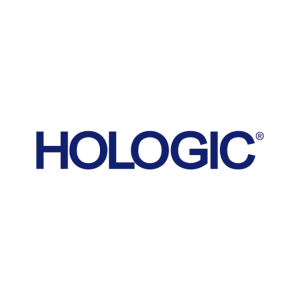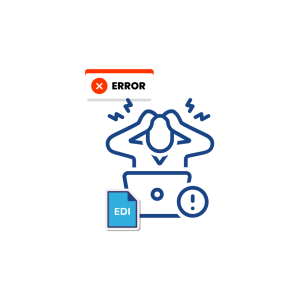Define EDI Standards
EDI communication standards are the requirements for the format and composition of EDI documents. EDI standards delineate the correct order and location of units of data in each EDI document.
Because EDI documents must be processed by computers rather than humans, a standard format must be used so that the computer will be able to read and understand the documents.
Here is the list of 10 common EDI communication standards,
- ANSI ASC X12
- TRADACOMS
- UN/EDIFACT
- ODETTE
- EANCOM
- VICS
- VDA
- HIPPA
- RosettaNet
- SWIFT
1. ANSI ASC X12
ANSI stands for American National Standard Institute founded the Accredited Standards Committee (ASC) in 1979 to develop uniform standards for the inter-industry electronic exchange of business transactions, namely electronic data interchange (EDI). This standard is also sometimes called the ANSI X12 Standard or simply X12.
Each EDI X12 transaction type is differentiated by a unique 3-digit number and there are more than 300 different types of X12 EDI standards for various industries from finance, government, healthcare, insurance, banking, transportation, and many more.
Read more about ANSI ASC X12
2. TRADACOMS
Tradacoms stands for Trading DAA Communications is an early EDI standard that was originally introduced in 1982 and was primarily used in the UK retail sector.
Each TRADACOMS message, much like EDIFACT, is given a six-letter application reference. For example, an invoice message is INVFIL, a payment order is PAYORD, a utility bill is UTLHDR, and so on.
Read more about TRADACOMS
3.UN/EDIFACT
UN/EDIFACT stands for United Nations/Electronic Data Interchange for Administration, Commerce, and Transport is the international standard that was developed by the United Nations). Comprise a set of internationally agreed standards, directories, and guidelines for the electronic interchange of structured data, between independent computerized information systems.
The EDIFACT standard provides a set of syntax rules to structure, an interactive exchange protocol, and provides a set of standard messages which allow multi-country and multi-industry exchange of electronic business documents..
Read more about UN/EDIFACT
4. ODETTE
ODETTE stands for Organization of Data Exchange by Tele Transmission in Europe is a group that represents the interests of the automotive industry in Europe. ODETTE’s mission is to improve the efficiency and enhance the competitiveness of the European automotive industry within the global economy.
The great strength of ODETTE standards is that they are created by people who are experts in their field and know the real needs of the companies they represent.
Read more about ODETTE
5. EANCOM
EANCOM was originally developed for the retail sector and is now found in a variety of other industry sectors such as healthcare, construction, and publishing.
Read more about EANCOM
Benefits of ENCOM
- Use a standard numbering convention – EAN unique identification number recognized worldwide. This helps business partners not to maintain complex reference codes for each business partner’s internal codes.
- Messages are simple and accurate – Simplified EDI messages reduce transmission costs and facilitate processing
- Multi-industry standard – The uniqueness of the EAN number allows any item to be identified and consequently any business, regardless of its activity.
- International – ENCOM messages are used worldwide covering more than 80+ countries.
- Maintenance and support – Representatives from various industries have established several project teams to analyze specific issues and develop business-oriented solutions
6. VICS
VICS stands for The Voluntary Inter-Industry Commerce Standard VICS has enabled companies in the retail and consumer-focused industries to eliminate billions of dollars of waste and delay. By creating voluntary guidelines, often referred to as “standards,” VICS has created new best practices that ultimately lead to lower costs and better availability of products for consumers.
In 2012, GS1 US and the Voluntary Interindustry Commerce Solutions (VICS) Association signed a memorandum of understanding to merge their operations. The merger is designed to streamline the standards adoption process for the industry and give the not-for-profit organizations’ members access to standards for a broader range of supply-chain functions
Read more about VICS
7. VDA
The German Association of the Automotive Industry (VDA) has its headquarters in Berlin, Germany. VDA serves the needs of the German automotive industry by developing standards and best practices.
The VDA has developed over thirty messages to meet the need of companies such as VW, Audi, Bosch, Continental, and Daimler AG.
Read more about VDA
8. HIPAA
HIPPA stands for The Health Insurance Portability and Accountability Act was enacted by the U.S congress in 1996. It’s a federal law that requires the creation of national standards to protect sensitive patient health information from being disclosed without the patient’s consent or knowledge. It generally prohibits healthcare providers and healthcare businesses, called covered entities, from disclosing protected information to anyone other than a patient and the patient’s authorized representatives without their consent.
Read more about HIPAA
9. RosettaNet
RosettaNet is a subsidiary of GS1 US, formerly the Uniform Code Council, Inc. (UCC). RosettaNet is a non-profit consortium aimed at establishing standard processes for the sharing of business information (B2B). The standard is widely spread in the global semiconductor industry, but also in electronic components, consumer electronics, telecommunication, and logistics.
The RosettaNet document standard is based on XML. It covers a broad range of logistics and financial transactions, including purchase orders, shipment notices, invoices, return requests, quotes, and more.
Read more about RosettaNet
10. SWIFT
SWIFT stands for The Society of Worldwide Interbank Financial Telecommunication. It was formed in 1973 and is headquartered in Brussels. SWIFT operates a worldwide financial messaging network that exchanges messages between banks and financial institutions. SWIFT also markets software and services to financial institutions, much of it for use on the SWIFTNet Network.
Read more about SWIFT
Conclusion
EDI communication standards play a pivotal role in fostering seamless and efficient electronic data interchange between businesses. By providing a common language for the exchange of information, such as EDIFACT and ANSI X12, these standards enable standardized communication, reduce errors, and enhance interoperability, ultimately contributing to improved collaboration in the global business landscape.
EDI Standards Complete Guide
Need Help? Download: EDI Buyers Guide
Unlock the full potential of your supply chain with our comprehensive EDI Buyer's Guide — your first step towards seamless, efficient, and error-free transactions
Frequently Asked Questions
EDI communication standards are predefined formats and protocols that dictate the structure and syntax of electronic data interchange. Common standards include EDIFACT and ANSI X12, ensuring consistency in the exchange of business documents.
EDI communication standards are essential for ensuring uniformity and compatibility in the exchange of electronic documents. They enable seamless communication between different trading partners, systems, and industries, reducing errors and improving efficiency.
Yes, there are industry-specific EDI standards tailored to the unique needs and requirements of various sectors. For example, ANSI X12, EDIFACT, VDA, TRADACOMS etc
EDI standards facilitate interoperability by defining a common language for the exchange of business documents. This ensures that systems from different organizations can understand and process data consistently, promoting smooth communication and collaboration.
In many cases, businesses can choose the EDI standard that aligns with their industry and trading partners’ preferences. However, successful collaboration often requires mutual agreement between parties on a specific standard to ensure seamless communication.





